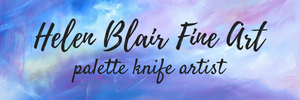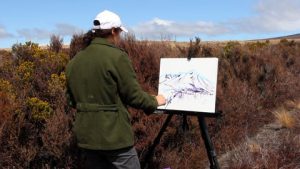- “What I like to do is look at my portfolios of old paintings I did back when I had inspiration. I also look at any other artwork that I left off with, and try to put myself back where I was before I’d lost my inspiration. Sometimes, I’ll go back to places I used to spend a lot of time at while painting, either someplace I painted at, or just someplace I frequented that might help me get my focus back.”
- “I draw in my visual Diary, its a place where you can draw freely and not have any pressure on you to have it perfect or finished”
- “Set aside a small area in some room. Even in the TV room if you enjoy watching television as you paint. But, have a table (such as a card table) and comfortable chair there, and be able to leave your paints, brushes , canvas/easel, set out. If you have a area or corner dedicated to painting, without having to bring out the supplies each time, then you could start immediately if the desire hit you’.
- “Grab a few canvases and gesso or basecoat a color of acrylic paint on them in preparation. Or take some turps, dip a rag or crushed-up paper towel in it and then in raw sienna or ochre or whatever, and create a toned canvas, in preparation of painting in oils. Just this simple action somehow makes you feel that you are ‘in the groove’ of painting, and who knows, you just might start touching that brush to canvas and be on your way!”
- “Just like keeping a journal, painting is expression and maybe just painting it out would help you to overcome some of your feelings. Paint your feelings, you may very well be surprised at what you come up with. Dark paintings can be just as nice as light ones, its a part of you and how you feel at the time you paint them.”
- “I find that if I get my favourite music on the radio or one of my favourite records on the turntable and then set out my favourite colors on my palette, I then have awakened the desire to create something. Then I look for one of my old unfinished paintings and play with it. That is what usually works for me.”
- “I set up my painting area, put the canvas or paper out, set it up, and get my paints prepared. Then when I think of it, when I am at my desk, in the same room, I just go to it and put some colour down of what I want the thing to look like … an outline of the face, whatever you want to paint. If I do a little here and a little there, it keeps me plugged in and I get to the place where I just start to make a change and end up finishing the painting. I keep it on the board for a few days, seeing if I want to change anything.”
- “It’s not unusual at all that a sickness or bad relationship can affect your work. Many people stop painting when this happens but that is the worst thing to do. Painting can actually help you sort out these problems if you stick with it. Think of it as physical therapy for the soul. Art is deeply personal thing and it goes right to soul of the person. Many people will tell that if you want to know how a person really thinks and feels all you have to do is look at their paintings.”
- “When I lose inspiration I try meditating on my art work, what I wish to create. Try concentrating on a blank canvas or whatever you like to use. Try listening to music and draw to the music; draw what you feel the music is saying to you.”
- “Reading helps but continuing to try is the best way of coming out of a creative slump.”
- “Try a new style or medium.”
- “Go to scenic places, try doing a plain air painting or just doing some sketching”
- “Hang out with other artists and watch them work, until you find yourself painting (interacting) with them, too.”
- “Go to bookstores and browse over those nice artbooks. Buy if you want, why not?”
- “Review your old photographs of places you have been to and try to recall your feelings when you were there taking those photos.”
- “‘Stop and smell the roses.’ Do what we can to stimulate our brains and get back to those feelings.”
Monthly Newsletter signup


